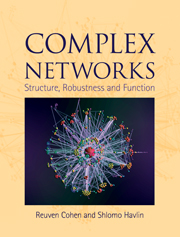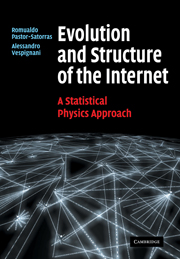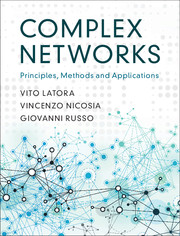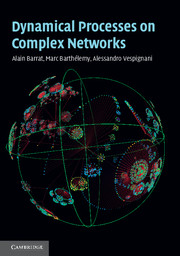Complex Networks
Examining important results and analytical techniques, this graduate-level textbook is a step-by-step presentation of the structure and function of complex networks. Using a range of examples, from the stability of the internet to efficient methods of immunizing populations, and from epidemic spreading to how one might efficiently search for individuals, this textbook explains the theoretical methods that can be used, and the experimental and analytical results obtained in the study and research of complex networks. Giving detailed derivations of many results in complex networks theory, this is an ideal text to be used by graduate students entering the field. End-of-chapter review questions help students monitor their own understanding of the materials presented.
- Covers a range of subjects, from the stability of the internet to efficient methods of immunizing populations, to give the reader a broad presentation of the topic
- Focuses on analytical techniques to give readers the basic tools to use in their own research
- Each chapter ends with review questions so that students can monitor their understanding of the material presented
Product details
August 2010Hardback
9780521841566
248 pages
253 × 193 × 16 mm
0.7kg
56 b/w illus. 65 exercises
Available
Table of Contents
- 1. Introduction
- Part I. Random Network Models:
- 2. The Erdos–Renyi models
- 3. Observations in real-world networks
- 4. Models for complex networks
- 5. Growing network models
- Part II. Structure and Robustness of Complex Networks:
- 6. Distances in scale-free networks: the ultra small world
- 7. Self-similarity in complex networks
- 8. Distances in geographically embedded networks
- 9. The network's structure - the generating function method
- 10. Percolation on complex networks
- 11. Structure of random directed networks - the bow tie
- 12. Introducing weights: bandwidth allocation and multimedia broadcasting
- Part III. Network Function: Dynamics and Applications:
- 13. Optimization of the network structure
- 14. Epidemiological models
- 15. Immunization
- 16. Thermodynamic models on networks
- 17. Spectral properties, transport, diffusion and dynamics
- 18. Searching in networks
- 19. Biological networks and network motifs
- Part Appendix A. Probability theoretical methods
- Appendix B. Asymptotics and orders of magnitude
- Appendix C. Algorithms for network simulation and investigation
- References
- Index.






